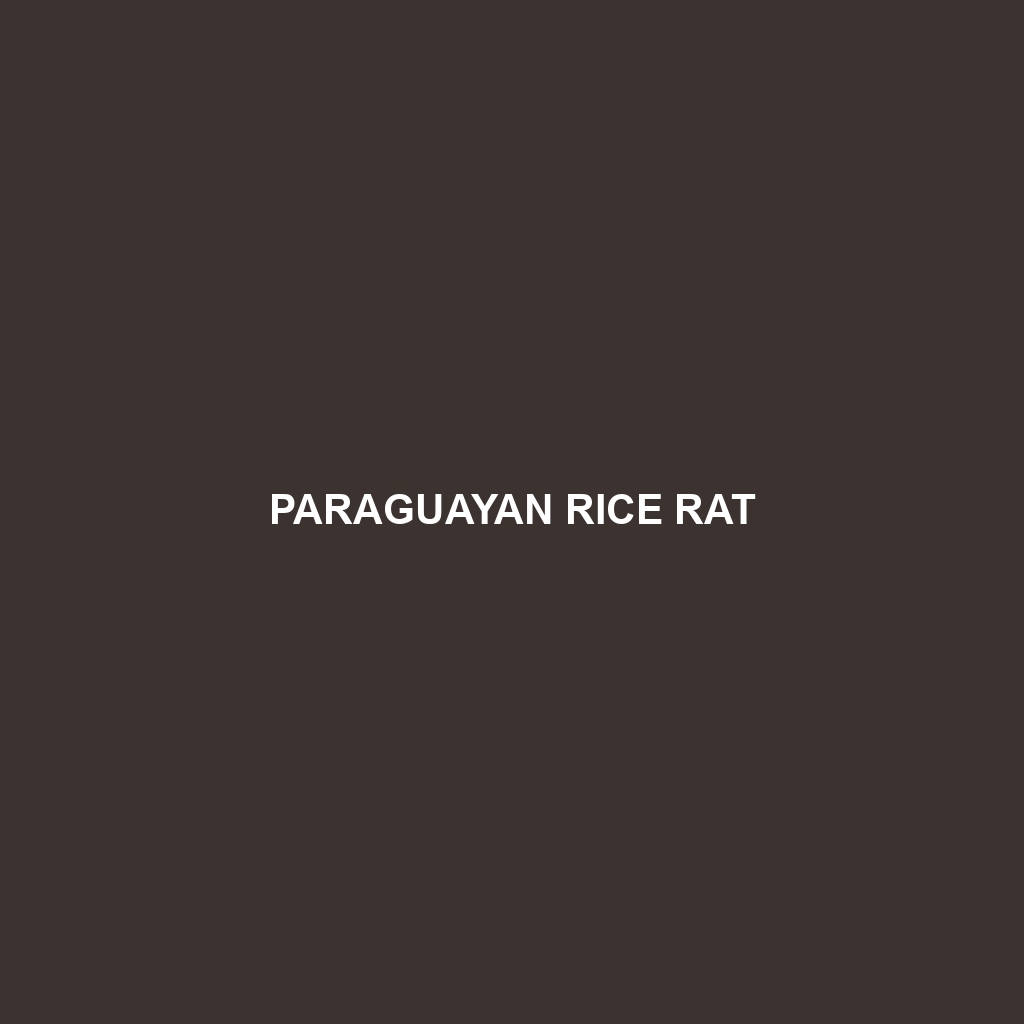Paraguayan Rice Rat ()
Common Name: Paraguayan Rice Rat
Scientific Name:
Habitat
The Paraguayan Rice Rat is primarily found in the wetlands and grasslands of southeastern Paraguay, particularly in areas near rivers and streams. This rodent prefers habitats that offer abundant vegetation and cover, allowing them to thrive in marshy environments. They can also be found in surrounding regions of Argentina and Brazil, where similar ecological conditions exist, contributing to their adaptability to diverse landscapes.
Physical Characteristics
The Paraguayan Rice Rat is a medium-sized rodent, generally measuring between 20 to 30 cm in body length, excluding the tail, which can reach an additional 18 cm. Its fur is typically brown or gray with lighter underparts, providing excellent camouflage against their grassy surrounds. Notable features include long, slender bodies, large eyes, and relatively large ears which enhance their sensory perception in low-light conditions. Their long, scaly tails aid in balance and agility, making them proficient climbers and swimmers.
Behavior
Paraguayan Rice Rats are primarily nocturnal, exhibiting heightened activity during the night. They are known for their agile movements and propensity for burrowing, creating complex tunnel systems in their preferred habitats. Social creatures, they often live in small family groups, engaging in vocalizations to communicate. Their ability to swim allows them to evade predators and access food sources in aquatic environments.
Diet
The diet of the Paraguayan Rice Rat is largely omnivorous, consisting of seeds, fruits, and aquatic vegetation. They are also known to consume insects and small invertebrates, reflecting their adaptability in food sourcing. Their feeding habits are crucial for seed dispersal within their habitat, contributing to the ecological balance in wetlands and grasslands.
Reproduction
Paraguayan Rice Rats typically breed throughout the year, with peak activity noted during the rainy season. Females give birth to litters of 3 to 7 offspring after a gestation period of approximately 28 to 30 days. The young are born hairless and blind, relying on maternal care until they mature sufficiently to forage independently. Parental care is notable, with both parents often participating in nurturing the young.
Conservation Status
The conservation status of the Paraguayan Rice Rat is currently classified as ‘Least Concern’ by the International Union for Conservation of Nature (IUCN). However, habitat loss due to agricultural expansion and urban development poses potential threats to their populations. Conservation efforts are essential to maintain their natural habitats and ensure their long-term survival.
Interesting Facts
– The Paraguayan Rice Rat is known for its exceptional swimming ability, often seen foraging in water.
– They have a keen sense of smell, which helps them locate food sources even in dense vegetation.
– This species plays a vital role in maintaining the ecological integrity of its habitat through seed dispersal.
Role in Ecosystem
As a herbivorous and omnivorous species, the Paraguayan Rice Rat plays an essential role in its ecosystem. By consuming a variety of plant materials and dispersing seeds, it helps maintain plant diversity and supports the overall health of wetland environments. Additionally, as prey for various predators such as birds of prey and snakes, they are an integral component of the food web, facilitating energy transfer within their habitat.
